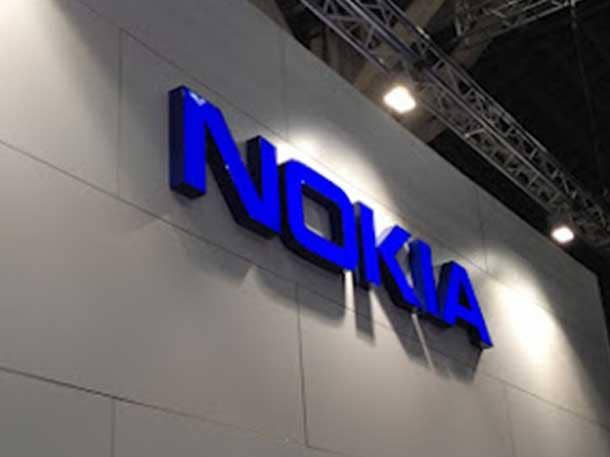Nokia Channel Chief To Partners: Private Wireless Is ‘Here And Now’
‘This is not a 2024 or 2025 problem to solve. It’s here and now. We’re winning very large opportunities, significant opportunities with the technology,’ Nokia’s Nathan Stenson tells CRN.

Don’t Be Late
Executives at telecommunications giant Nokia believe that there’s no better time to pounce on the private wireless opportunity.
If the last three years has taught the world anything, it’s that there are more devices and applications in new, and sometimes far-flung places that require connectivity. Sometimes, businesses and partners must be creative with that connectivity. Wireless technology like Wi-Fi 6 isn’t always an option for hard-to-reach locations or users. That’s where private wireless solutions, powered by cellular technology, can come into play. Private wireless networks can compliment or serve as a primary connectivity option for some locations and allow businesses to remotely manage the network or endpoints in the process. Many businesses are discovering private wireless as a good fit for their needs as they digitally transform their environments.
Private wireless infrastructure revenue is expected to reach $8.3 billion by 2026, according to research firm IDC. That’s why Nokia is tapping into the private wireless opportunity and wants its ecosystem of more than 1,400 global VARs, systems integrators, and consulting partners to come along for the ride and bring their unique expertise with them.
Nathan Stenson, vice president of Worldwide Partner Channel for Nokia, sat down with CRN to talk about the growing opportunity around private wireless and why customers are clamoring for the technology. He also talked about Nokia’s relationship with private wireless startups, and the company’s channel strategy and program that have been evolving under his 14-month reign as channel chief.
Here’s what Stenson had to say.

What is driving the need for private wireless solutions?
Digital transformation is driving most use cases [for private wireless], whether it’s manufacturing — which I think it’s a really important one — mining, power, utilities [and] oil and gas. All of those require high bandwidth, low latency communications to support the business cause … The challenges are reliable coverage, multi-user capacity, low latency [and] data security. I think people know about Wi-Fi 6’s limitations. But I don’t think it’s a Wi-Fi 6 versus private wireless thing. I think people want to use those in a hybrid way that which makes sense. There are just some things that private wireless could do that Wi-Fi 6 can’t and mining is a good example of that. Private wireless is being adopted by many mines to put technology where they don’t want to put people and the use case for that business outcome for that is a very obvious one. So, there are some of these obvious use cases and reasons why [private wireless] resonates more because the technology does stuff uniquely. In other cases, people are becoming more familiar with private wireless as more and more people want to talk about it as a potential solution, and we’re able to provide those curated use cases, which gives people confidence in the choice they should be making.
Naturally, when you talk about the private wireless network, you’re really talking about the application very soon after. It’s not just about the connectivity. You need specialized industry knowledge with how you integrate this stuff. That’s why partners are relevant — because customers want end to end solutions … This is not a 2024 or 2025 problem to solve. It’s here and now. We’re winning very large opportunities; significant opportunities with the technology.

Do you think recent trends, like hybrid work, have driven adoption of private wireless?
It has, and there are other trends that we have in the world at the moment, [for example], the war and the summer we just had in Europe — the reminder of the environment and how people are looking for technology to help address some of these things. Mining — all of a sudden, mining assets have become critically important. Mining is a big use case for us. Private wireless in manufacturing is at an inflection point in our industry and the efficiencies and the automation [it can deliver].
We’ve talked a lot about IT and OT kind of coming together and people are looking for all of the advantages that technology can bring as we go through the tough times, because all of these things that we’ve talked about — war, COVID, the energy crisis — I think a lot of these at the moment are going to make the next year or two probably quite tough and people want to be doing more of what they have. And they want to look to technology to give them all the efficiencies that they can. So yes, why this is [private wireless] such an important technology push? Because it’s hitting a lot of those buttons for sure.

Are you competing with the startups popping up on the private wireless scene?
A lot of them are our partners — I’m proud to say that. In North America, the spectrum situation is one entity as opposed to many entities in countries that are working through it, but we still have partners and customers [in those countries] that navigate those challenges to deliver fantastic private wireless solutions. But a lot of these [startups] are partners of ours and one of the things we do quite religiously now is hold our partner advisory is where we get our most significant partners together in a particular technology area — usually the owners or principals of these entities — and [a few] messages are coming from these partner advisors. Firstly, we are Nokia. We have more data, more collateral, more know-how, and we never rest on our laurels because we ready do understand how competitive the marketplace is. The other thing that’s really important to be successful in this area is curated use cases. It’s great to be able to borrow or refer use cases that are around the technology, but you have to own one yourself. You have to have something you’ve taken and can demonstrate how you’ve launched it from a connectivity perspective that helped with the application and devices around it. That’s the second thing. The third thing is really practical proof of concept. Frictionless, quick, quality, proof of concept in the area of private wireless is critical. We know as sales leaders and salespeople in the channel that proof of concepts are fundamental.
To reflect on that, what we’ve done in the channel is we’ve made access to those things frictionless. [By that] I mean that within the channel, we’ve invested in more resources to assist partners, because partners don’t always come to us fully enabled, right? We see them through the journey. We understand that they’re going to become more and more sophisticated over time, but we know we might have to help them more in the beginning of that journey. We’ve established a team uniquely for the Nokia channel where all they do is private [wireless] proof of concept. And that’s dedicated to the channel and that’s free of charge. It’s there to provide partners with support on priority customer projects, where we will run that proof of concepts with them in true partnership. And then the third one is helpdesk, both pre- and post-installation on any issues or problems, [like] “How can I spin up?” Or “Where’s the best place to put this particular box to get to get the right reception?” And everything else in between. We take great care to think about the channel to support the channel needs as it embraces the new technologies. So, it’s a very exciting place to be at the moment and to see some of our partners’ feedback that we’re still ahead of the game here is great.

How is Nokia attacking the channel today and what partners are you going after?
[Our program] consists of four main types of partners. Firstly, the global systems integrator [SI] partner community. Secondly, VARS [who are] the broadest church of all. We have very small, boutique partners that may be concentrating on one or two particular verticals, right through to super VARs that have network management capabilities equal to the very sophisticated telco SIs out there. Thirdly, it’s known as a telco go to market, and this is actually working with the telcos, preferably going on to their portfolio that they then offer [our] technology to aid enterprise customers. And then finally, distribution, and we are actually under-distributed. We haven’t been doing distribution for many years — it’s been 10-15 years, so we’re at the beginning of our journey there. Already, distribution is playing a fundamental part in our go to market because we all know that distribution that is the way in which you’ll get very wide and very fast coverage, certainly for some verticals out there. We have about 1,400 contracted partners globally that we currently engage with.
Given the nature of indirect channel, [there’s] value our partners bring to particular technology pushes, like private wireless. Some of the demand for that technology … is already quite a significant part of the enterprise business.

What are you plans for the partner program?
I’m 14 months into my tenure now and one of the things we were doing for the global partner program is [branding]. Across the channel, our program is simply an acronym – the GPP, global partner program. We will need to brand our partner program and this will be very important to us going into 2023.
In parallel with that, we are spending a lot of money on a new-generation partner portal which will collocate all the tools you can imagine — all the pricing tools we have and funding that exists under our PFA — our partner framework agreement. So, not only do we have an established partner program and all the components, we’re investing in the resources that make the access to that much easier for our partners all collocated in one place. And indeed, the contracts and mechanisms — because of course, as you can imagine, for our indirect resellers or distribution, there’ll be a different agreement for those folks because of their expectations on managing that relationship themselves will be quite different from the partner frame of agreement that we’re putting in place that governs that relationship directly with one of those global SI partners. So, we have a suite of contracts that are underpinning the different way which will work with the channel.
We’re very happy to work with more partners that have good edge networking capabilities, that are already thinking about inroads into private wireless, either now or in the immediate future, that want to take advantage of the private wireless opportunity today. I think people have get in there now. Just be careful how long you take to think about your solution and think about getting into the market because it’s highly connected today.